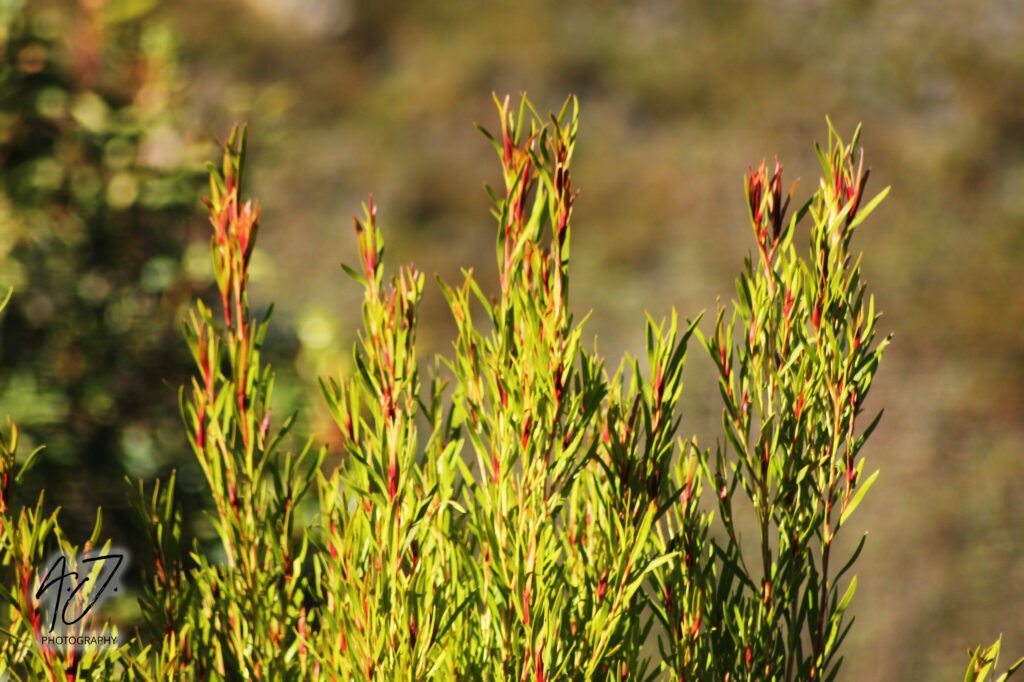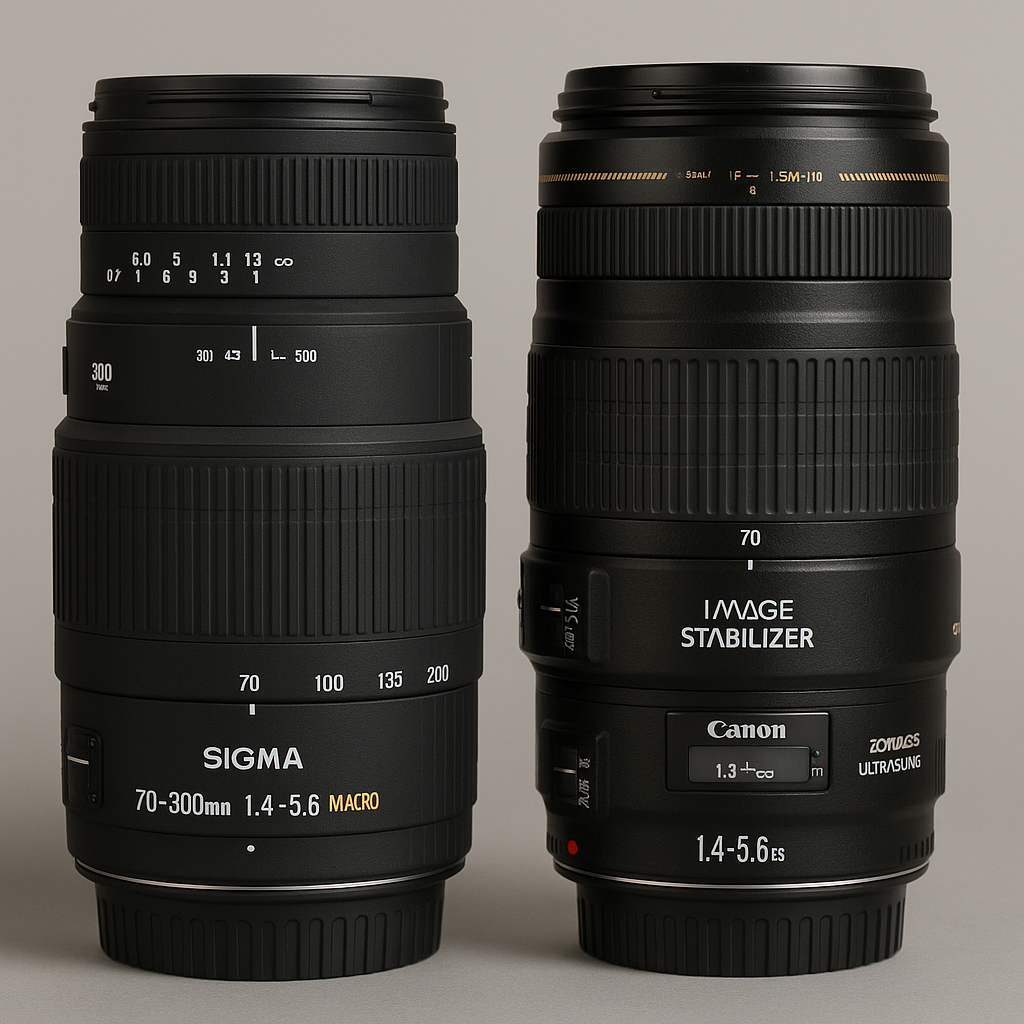📸 Introduction: Why the Canon 70-300mm vs Sigma 70-300mm Range Matters
If you love capturing wildlife on the move, zooming in on dramatic landscapes, or shooting from a distance on hiking trails, a Canon 70-300mm vs Sigma 70-300mm telephoto lens is a must-have in your camera bag.
Two of the most affordable and popular options are:
- Sigma 70-300mm f/4-5.6 DG Macro
- Canon EF 70-300mm f/4-5.6 IS USM
In this blog, we put them head-to-head. Whether you’re a beginner or a nature-loving shutterbug, this comparison will help you make the right lens choice.
Table of Contents
🛠️ Build Quality & Handling
Sigma 70-300mm DG Macro
- Lightweight plastic body with metal mount
- Zoom ring is soft and loose
- Compact and great for travel
- Ideal for light daypacks
Canon 70-300mm IS USM
- Higher-grade materials
- Tighter, more professional handling
- Better balanced on DSLR bodies
- Slightly heavier but sturdier
🏕 Verdict: Canon wins for outdoor durability and long-term use. Sigma is easier to carry, but not as rugged.
⚡ Autofocus Speed & Accuracy

Photo taken with the Sigma 70-300mm lens
Sigma Telephoto Autofocus
- Slower micromotor system
- Audible focus noise
- Struggles with moving subjects
- Low-light performance is weak

Photo taken with the Canon 70-300mm
Canon USM Autofocus
- Ultrasonic motor (USM) = fast and silent
- Great for wildlife and action shots
- Reliable in poor lighting conditions
- Excellent focus tracking
🎯 Verdict: Canon is the clear winner. Autofocus is sharp, fast, and consistent—especially in the field.
🧍♂️ Image Stabilization: Handheld or Bust?
Sigma 70-300mm
- No image stabilization (IS)
- Tripod often required for crisp shots at 300mm
Canon 70-300mm IS
- Built-in Image Stabilizer (2–3 stops)
- Sharp handheld shots even at long focal lengths
- Ideal for hiking, safari, or low-light shooting
🪶 Verdict: Canon wins hands-down. Stabilization makes all the difference on an uneven trail or moving vehicle.
🔬 Image Quality & Optical Performance
Sigma Lens Sharpness
- Good sharpness at 70–200mm
- Soft at 300mm
- Some chromatic aberration (fringing)
- Macro mode (1:2) is fun and unique
Canon Lens Sharpness
- Sharper across all focal lengths
- Better contrast and color rendering
- Less distortion and fringing
- No macro, but consistently better clarity
🏞 Verdict: Canon takes it, but Sigma’s macro mode is a nice touch if you like shooting textures, insects, or flowers.
🎒 Portability & Travel-Friendliness
| Feature | Sigma 70-300mm | Canon 70-300mm IS USM |
|---|---|---|
| Weight | ~550g | ~630g |
| Length | 122mm | 143mm |
| Filter Size | 58mm | 58mm |
Sigma wins for hikers who count grams. But Canon’s slight weight increase comes with better performance and handling.

💰 Price & Value
Sigma 70-300mm
- ~$100–$150 (used)
- Great entry-level option
- Includes macro feature
Canon 70-300mm IS USM
- ~$250–$400 (used or refurbished)
- Professional features at budget price
- Long-term investment lens
📊 Verdict: Sigma wins on budget, but Canon wins on performance. Choose based on your skill level and goals.
✅ Pros & Cons Summary
Sigma 70-300mm DG Macro
Pros:
- Lightweight and affordable
- 1:2 macro capability
- Versatile for beginners
Cons:
- No image stabilization
- Slow, noisy autofocus
- Soft images at 300mm
Canon 70-300mm IS USM
Pros:
- Image Stabilization (IS)
- Fast and silent USM autofocus
- Sharp images across range
- Reliable for nature, wildlife, and events
Cons:
- Slightly heavier
- Higher cost (but worth it)
🏁 Final Verdict: Which Lens Should You Choose? Canon 70-300mm vs Sigma 70-300mm
If you’re just stepping into telephoto photography or love experimenting with macro at a budget, the Sigma 70-300mm DG Macro is a good first step.
But if you want consistent results, especially when photographing moving wildlife, landscapes, or safaris, the Canon 70-300mm IS USM is the better investment—by a long shot.
Amazon Rating: 4.5 out of 5 (1888 global ratings)
Amazon Rating: 4.7 out of 5 (7 global ratings)
About the Author:
Mayfred is the founder of Fredicia.com, an outdoor blog dedicated to gear reviews, survival tips, and epic adventure content across the bushveld, coastlines, and mountains of South Africa. When he’s not reviewing lenses, he’s probably climbing something or baking rusks.
So what will it be? Canon 70-300mm vs Sigma 70-300mm
Link to buy Canon lens on Amazon: Click Here!
Link to buy Sigma lens on Amazon: Click Here!





